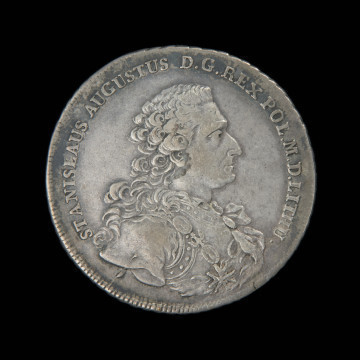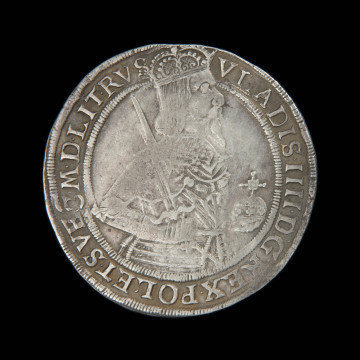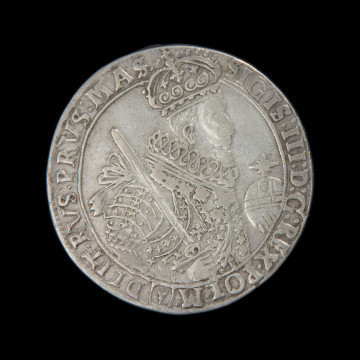
Thaler
1766
National Museum in Szczecin
Part of the collection: Polish coins
The Saxon era is traditionally believed to be the period of the decline of the Republic of Poland, its political and economic life, an era of freedom of the nobility and interference in Polish affairs by neighbouring states. The reign of Augustus III (1696-1763) is considered to be particularly bad in this context. Already during the reign of his father, Augustus II the Strong (1670-1733), Poland experienced economic turmoil. The old and devalued coins of previous rulers continued to be popular on the market. The royal mints were closed and the mints in Gdańsk, Toruń and Elbląg were only sporadically put into operation and minted small quantities of coins. To counteract the monetary anarchy, Augustus II ordered Polish coins to be minted in Leipzig in Saxony. Augustus III continued his father's policy, as evidenced by the displayed thaler. The ruler is depicted on it wearing a Western European breastplate. This is the only type of thaler from 1754 with this kind of a depiction. The remaining four types depict the king wearing Roman armour. The portrait in a breastplate with pauldrons is rare among Polish coins minted by Augustus III, found on only four of the 18 known types of these coins. The reverse of the thaler features a crowned circular four-field escutcheon with a small shield of the Electorate of Saxony under the Elector's cap. The coat of arms is surrounded by a laurel wreath. Such a design of a state coat of arms, used on almost all types of coins, was a novelty in Polish minting practices, as to date, Polish coins featured Spanish-type coats of arms, and the appearance of various denominations was not standardised. Below the escutcheon, we can see the letters EDC – initials of Ernest Dietrich Croll, the master of the Leipzig mint between 1753 and 1763. Polish thalers were made in Leipzig in 1753-1756. In 1756, when Prussia attacked Saxony and Frederick the Great (1712-1786) captured Polish mint stamps, fake Polish coins appeared on the market – including Polish thalers, which were also forged and made out of silver, the quality of which was vastly inferior compared to the original coins.
Mieszko Pawłowski
Other names
Talar
Author / creator
Dimensions
cały obiekt: diameter: 41.5 mm
Object type
coin
Technique
minting
Material
silver
Creation time / dating
Creation / finding place
Owner
National Museum in Szczecin
Identification number
Location / status

1766
National Museum in Szczecin

1657
National Museum in Szczecin

1629
National Museum in Szczecin
DISCOVER this TOPIC
Museum of King Jan III's Palace at Wilanów
DISCOVER this PATH
Educational path